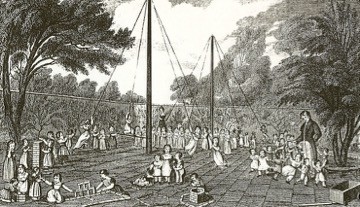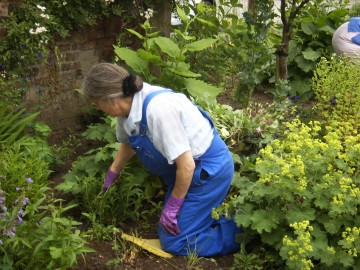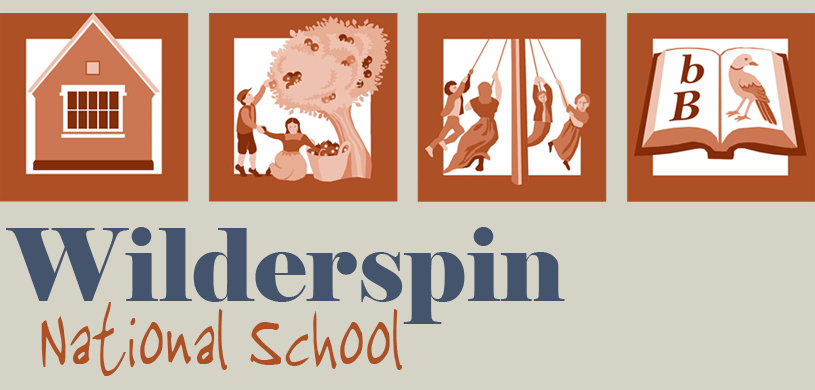The Playground was an essential part of Wilderspin’s schools. He believed that undirected ‘free’ play was a way of “developing character and moral behaviour through co-operation and shared play”.
Wilderspin was the first to really develop the use of school grounds for playgrounds and gardens, and to use special equipment there. A fully developed Wilderspin playground was brick paved, with trees, vines, flower beds, and some even had gardens with vegetables and cereals.
It had equipment, such as swings. The early use of hoops, sticks, whips and tops etc. proved problematic so were later abandoned, replaced only by building blocks. Intended as an area for exercise, stimulation of the senses, and co-operative play, it “may be compared with the world, where the little children are left to themselves, there it may be seen what effects their education has produced”. The teacher was not to interfere, but to observe either in the playground itself, or from the masters house window.
The Infants’ Playground was separate from the yards used by the older girls and boys. The “outside classroom” was accessed directly from the infant schoolroom – the two spaces, in essence, working together as one. It was characteristically large with six times more space per child than the boys’ and girls’ yards.
An illustration included in Wilderspin’s books shows children and their master and mistress in the playground. Some children are on circular swings, others playing with special building bricks. There are trees, flower beds etc. Meanwhile the master and mistress, each surrounded by jolly children, look on but don’t interfere with the children. There is a circular swing, sometimes there was one for boy and another for girls. This one has a hurdle for jumping over too. The children had to use the swing co-operatively to swing together.
Many schools of Victorian or Edwardian date only had surfaced ‘drill’ yards, and it was not until the mid twentieth century that ‘softer’ playgrounds and gardens became regular features of new schools. It is remarkable to think that Wilderspin was advocating activities like cultivating vegetables, cereals, fruit trees and flowers around the playgrounds, and going with children on ‘nature walks’, in the first half of the nineteenth century.









